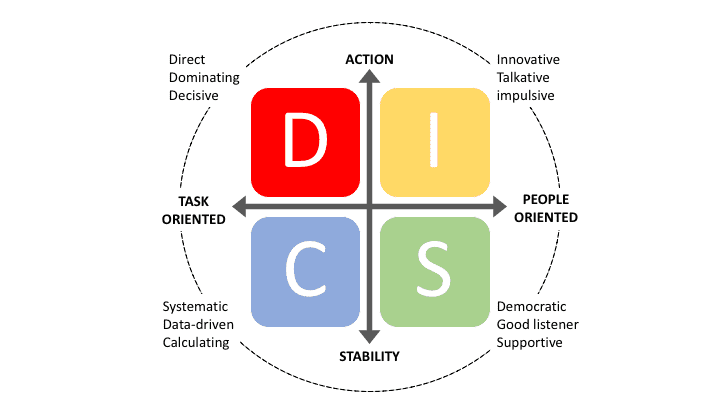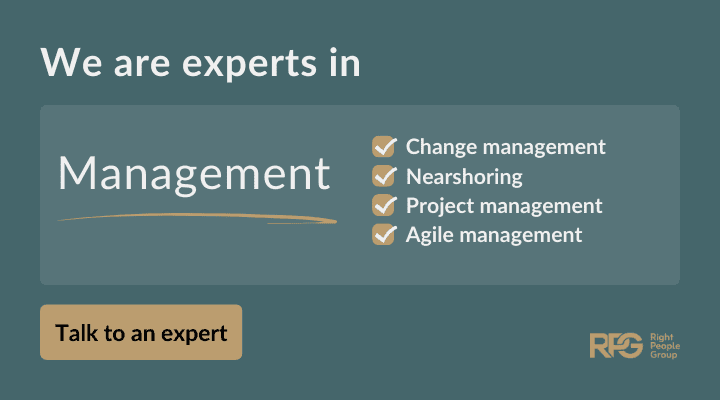DISC profile cheat sheet for customer communication
A DISC profile gives an overall understanding of how a person interacts with the outside world. That way, the DISC model gives you a useful tool to communicate effectively with different customer types and makes sure you close more of your deals!
We have all tried it. Some people just seem to understand what your ideas are all about. You seem to know exactly how they want it and why. As a freelancer, however, you must work with many different customer types and handle initial conversations with everyone from the receptionist to the CEO.
The goal is to provide you with a tool to understand how different profiles communicate and focus in the world. Through this, you can increase the chance to close more deals and understand what items to focus on, when talking to a new customer.
DISC profile background and purpose
The DISC model is a well-proven communication model with roots dating back to 1928, where it was first presented by William Marston. It is often misunderstood as a personality type model, but a DISC profile does not tell anything about your values, competencies or feelings. It relates only to the observable behaviour and communication you send out to the world and how this is perceived by others.
This tool provides you with a map to how the different DISC profiles typically communicate, and how you as a consultant and freelancer can change your own behaviour to align with what will be most effective with a specific receiver.
The axes of the DISC model
The DISC model divides people into four basic communication types separated by two axes.
The X-axis covers the spectre from human to task-oriented. It relates to the question of what is more important – effectiveness in fulfilling the tasks or the people involved? Highly task-oriented people will look at how a decision brings them closer to a goal more than those who have to pay the price. On a good day, this makes these people highly effective in a high-speed workplace with tight deadlines. On a bad day, this orientation makes them headstrong, arrogant and unable to see how their decisions affect the people around them.
The human-oriented profiles will in general search for community and support. Through democratic decision-making processes, they seek solutions where everyone is heard and feels represented. A process that can be perceived as sluggish and unnecessary for DISC profiles on the opposite side of the axis.
The Y-axis defines the span from stability to action. At the upper end of the axis are the action-oriented people. These people typically want to start the process and get things done now. They thrive in high energy environments and the ability to check off tasks. At the opposite end of the axis are the stability-oriented people. Here people tend to be focused on using the correct and previously tested and approved processes. The tendency to be risk averse often shows in the lack of ability to take quick and unsupported decisions.
The combination of these two axes gives the four communications types, which are outlined below. Of course, the reality is more complex, and your customers will not necessarily place themselves clearly in one quadrant, but the DISC profiles give you an overall understanding that can make your communication more efficient and successful. We have chosen to illustrate the four types in the DISC model with known personalities, which hopefully gives the theoretical model a little more colour and tangibility.

THE FOUR DISC PROFILES
D – Dominant – Donald Trump
The dominant communication type is characterized by direct and clear speech. A D-profile will often talk first when answering the phone and will be quick to decide what you have to offer, and if this is worth their time. When communicating with D-profiles, you need to focus on presenting why exactly this conversation gives the person value in relation to a goal they pursue. If you are talking to a customer or partner with DISC profile D, make sure your pitch is ready. Remember to think “what’s in it for me” from the customer’s perspective; try to have a specific offer ready, and see if you can close the deal on-site.
I – Influence -Will Smith
DISC profile I types will also typically talk first, but they are motivated by popularity among their peers. I-profiles don’t necessarily need the specifics of the products as they are largely controlled by emotions when deciding. If the product is new, innovative and gives value to them now – then they are probably already on board. It is therefore important that you as a freelancer focus on how you can contribute with new and innovative ideas. For example, by emphasizing how your unique expertise – and through using “workforce on demand” in general – will make their organization agile, fast and competitive.
S – Stability – Gandhi
S-profiles are stability seekers and are harder to handle in direct sales. They are oriented towards the common best and value diversity in opinions, which is why they often will discuss a decision with their team. They seek security in the product through recommendations and previous customer satisfaction. It is therefore important that you refer to other similar situations, where you have been valuable. Their fear of making a wrong decision can sometimes pave the way for a sale, and it is therefore important to emphasize how your product is a safe choice. Therefore, consider before the meeting how to reduce the S-types uncertainty and scepticism in relation to what you want to present. If you can get a reference from someone in your shared network to confirm your arguments, it will certainly have a tremendous effect. If it is possible, you can also offer to present your service to the whole team, so that the stability-seeking person does not stand alone with the decision to hire you or buy your product.
C – Competence- Bill Gates
People with a DISC profile C are oriented towards data, rules and authorities. Their risk-averse nature requires a lot and concrete information before taking a decision. For these people, it would typically be better to send a follow-up mail, where they can read about price, quality and compare with alternative options. As a consultant, you should be precise in the facts and details you provide because, in case of mistakes, you risk losing trust from the C-person. The keywords in cooperating with people seeking competence, are a thorough preparation and to allow room for the C-person to make a well-informed decision.
Your profile
If you are curious to find out which DISC-profile you are, you can take a free test here.
Download our DISC profile overview to see which behaviours are characteristic for the different DISC types and how to accommodate different DISC profiles in a way that convinces them that you or your services are a good match for their needs.
Need an expert consultant?
Get highly specialized IT and business consultants with deep technical and professional knowledge. We offer flexible solutions for both individual consultants and complete teams.
17+
years experience in the IT- and business consulting industry.
50+
dedicated employees
500+
consultants on assignments
15.000+
pre-screened consultants
Find consultants
Services
About us
Copyright © 2025 Right People Group. All rights reserved.


